Summer
Fun Special
—————-
By Beppe Colli
July 6, 2014
"Pure
escapism, you know?"
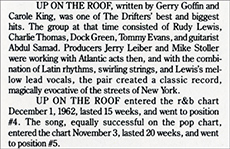
The Drifters
Up On The Roof
One of the most famous vocal groups of the 50s and the 60s, in 1962 The Drifters hit the top of the charts once again with this song penned by Gerry Goffin and Carole King, which remains a classic to this day. Expressing a strong desire for peace and quiet, the song manages to find both in a precise geographical spot: the roof at the top of the building in the middle of the noise of the city makes it possible for the narrator to escape the "hustling crowds/and all that rat race noise down in the street" by way of "a paradise that’s trouble-proof" where at night "the stars put on a show for free". Possessing a strong visual dimension, the song can easily be "translated" as a desire for "inner peace" as it was common by the mid-60s, as shown by those fine cover versions later recorded by Laura Nyro and Carole King herself.
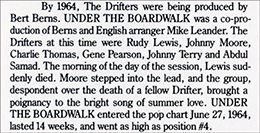
The Drifters
Under The Boardwalk
Where to go when it’s too hot and the roof becomes inhospitable? ("When the sun beats down and burns the tar up on the roof".) Two years after their release of Up On The Roof hit the top of the charts, The Drifters gave us the perfect answer once again: "Under The Boardwalk", a song of multiple covers, and eternal popularity. The wooden boardwalk along the beach gives everybody shade – and much-needed privacy – for free: "Under the boardwalk, down by the sea/ On a blanket with my baby is where I’ll be". Compare the relaxed, Latin-tinged, mood of the verses, to the more "assertive" tone of the chorus.

The Lovin’ Spoonful
Summer In The City
A key group of the 60s, for a couple of years The Lovin’ Spoonful made the top of the charts their home. Sporting a seasonal title, their big hit Summer In The City, released in June 1966, depicts the chaotic, hot day of the city in sharp contrast to the city’s cool night; something that the song arrangement cleverly underlines, with its inspired choice of different vocal and instrumental timbres. Sweat, a "sidewalk hotter than a match head", car horns, and the proverbial noisy jackhammer (all these sounds are dramatically employed in the song, to great effect) are replaced by a lively, but quite different scenario: "But at night it’s a different world" (…) "Come on, come on and dance all night/Despite the heat it’ll be alright". The final destination? "Running up the stairs, gonna meet you on the rooftop". Of course!
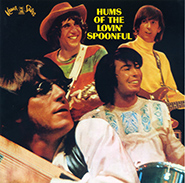
The Lovin’ Spoonful
Coconut Grove
I believe this song by The Lovin’ Spoonful has few equals when it comes to giving listeners the auditory illusion they are listening to a song performed in a space with no walls. Located in Florida, Coconut Grove provides warm refuge to those running away from New York snow. Here "inner peace" reigns supreme, and the ocean "will dull the drummin’/of any city thoughts or city ways". A "dreamy" atmosphere, with just a few colours from the electric guitar above a carpet of acoustics. Readers are invited to pay special attention to the way the "oo" from the word "cool" is sung – so similar to a wave – in the line "The ocean breezes cool my mind."
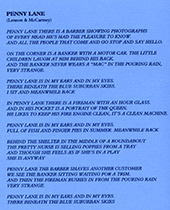
The Beatles
Penny Lane
In an age when it was common for all groups, big ones included, to influence each other – so that influences were not hidden, but flaunted – The Beatles recorded Good Day Sunshine (it’s on Revolver), a song sporting a good humour strongly related to such songs by The Lovin’ Spoonful as Daydream. Released in February (1967), their double A-side new single featuring the songs Strawberry Fields Forever/Penny Lane presented dramatic "climatic" differences – as different as their authors. While the scene in the song penned by John Lennon is – and always will be – submerged by a thick Winter fog, Penny Lane sports an exuberant climate that’s strongly related to Spring. But what’s the season? And why is it always raining, though we see "there beneath the blue suburban skies"? In his acclaimed book Revolution In The Head – The Beatles’ Records And The Sixties the late Ian MacDonald wrote fine pages about the various ambiguities in this song, which can still reveal hidden charms to perceptive listeners.
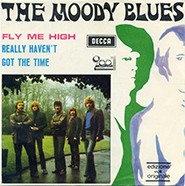
The Moody Blues
Fly Me High
Just a few months, and a new song released by The Moody Blues – Nights In White Satin, with its bleak autumnal light – will change the group’s fortunes forever. But in May ’67 the group had no way of knowing! So they tried to chart with this lively mix of "Beat" and "Folk" music, penned and sung by Justin Hayward. No Mellotron in sight, there’s a compressed piano, fine acoustic guitar played arpeggio at the start of the piece, Hayward’s vocals, very high falsetto vocals by bassist John Lodge, and a mood of carefree, lighthearted, stonedness – no doubts about what "brand new broom" can make one fly so peacefully: "Fly me straight and fly me high".
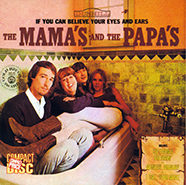
Scott McKenzie
San Francisco (Be Sure To Wear Flowers In Your Hair)
The biggest "surprise hit" of Summer ’67 was, of course, A Whiter Shade Of Pale by Procol Harum. But if one only considers "the counterculture", the most important hit of the year on a world scale was the colossal smash that made Scott McKenzie a household name. The song was penned by John Phillips of The Mamas & The Papas, who had talked about Summer "in absentia" with the hit single California Dreamin’. The first album released by the quartet, If You Can Believe Your Eyes And Ears, is a perfect example of fresh melodies and period slang – Somebody Groovy, Straight Shooter ("if you know what I mean"). Released in May ’67, the song San Francisco also worked as a kind of ad for the Monterey Pop Festival. Though structurally quite simple, the song – with a rhythm section featuring Hal Blaine and Joe Osborn – has an interesting development. Just an "A" section that’s repeated, with a crescendo in intensity that after a bridge presenting the "wide shot" ("All across the nation/Such a strange vibration" (…) "There’s a whole generation/With a new explanation") gets to the climax, then peacefully cools down over a bass figure played with a pick.
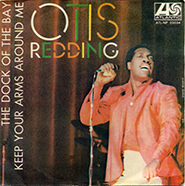
Otis Redding
(Sittin’ On) The Dock Of The Bay
Otis Redding’s show proved to be one of the high points of the Monterey Pop Festival, and his brand-new song (Sittin’ On) The Dock Of The Bay, with its tasty "more Pop, less R&B" flavour, appeared as the best song to address the new audience that had so enthusiastically greeted him at Monterey. And that’s precisely what happened, the song giving Redding his only #1. Unfortunately, the song was also the first posthumous #1 song ever – the plane on which Redding and his group traveled came down. To say that the mood of the song is open to interpretation is an understatement. Peace of mind and melancholia appear side-by-side in a sound-world featuring a superbly understated performance by Steve Cropper on guitar, and the whistling at the end. (Let’s not forget Runnin’ Blue, a song penned by Robbie Krieger of The Doors featured on their album The Soft Parade, also as a single, which mentions both Redding and The Dock Of The Bay.)
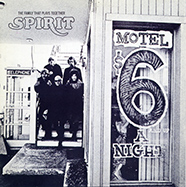
Spirit
I Got A Line On You
An original and versatile group, Spirit in their original line-up recorded four albums of equal merit. Alas, their music was too subtle for the mass market!, their only incursion in the charts being this song, whose taste of Summer in its brilliant colours is quite contagious ("You know my winter’s almost over/My summer, she’s comin’ on strong"). Fine vocal performance by guitarist Randy California, who also wrote the song, with singer Jay Ferguson here mostly on background vocals. Clever start & stop arrangement, compressed piano, lively bass guitar, and "psychedelic" guitar = a lot of good music in the space of a single.

Creedence Clearwater Revival
Proud Mary
Funny to notice, after all this time, that in the United States the single Proud Mary was released in Winter, the time of the European release appearing more "in tune" with the Summer flavour of this song. Which sounds quite optimistic – just listen to the guitar intro that lands on the chord that waits for the vocals to appear: how could those vocals bring bad news? (Though, come to think of it, there’s a Creedence song that does exactly that: Bad Moon Rising.) A serene mood ("You don’t have to worry if you have no money/People on the river are happy to give"), and a brilliant guitar solo that’s definitely "singable" and which definitely shows the influence of (Stax/Booker T. & The MGs) Steve Cropper.
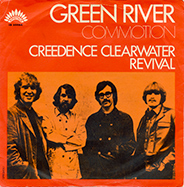
Creedence Clearwater Revival
Green River
Funny to notice, after all this time, that just like the time of the European release of Proud Mary appears as the better match, the same is true when it comes to the single Creedence released in the US in the Summer of 1969, the dark, thick mood of Green River being the perfect match for European Autumn. It’s Summer all over again, but this time Summer is to be located in one’s memory, as a summer holiday in one’s childhood ("Pick up a flat rock/Skip it across Green River"). At times the atmosphere is quite menacing – "Wonder if my rope’s still hangin’ to the tree" obviously refers to the games one played with a rope tied to a tree, but the mood and the vocals have an ambiguous effect. There’s a formidable guitar intro, guitar licks matching the vocals, and a memorable mixture of guitar timbres in the solo window.

The Zombies
Time Of The Season
Funny to notice that the The Zombies had just two hit singles: their first, and their last. At the time of its original release (1964), She’s Not There was a smash, later becoming a kind of "rock standard", US group Vanilla Fudge recording a cover on their acclaimed debut album. Released as a single in ’68, Time Of The Season only became a hit the following year, only in the United States, by which time the group had split. Tied to a time when customs and mores were strongly linked to the seasons, the song opens with a strong bass figure played with a pick, its "A" section climaxing each time with a vocal part strongly indebted to Gregorian Chant – a sure sign of the song’s links to psychedelia. The song narrative is to be found in the changing timbre and melodic movement of the solo parts played by Rod Argent on his Hammond organ, which here works as a stylistic bridge between Jimmy Smith’s gospel and (Traffic’s) Steve Winwood’s R&B-tinged psychedelia (or vice versa).
© Beppe Colli 2014
CloudsandClocks.net | July 6, 2014


